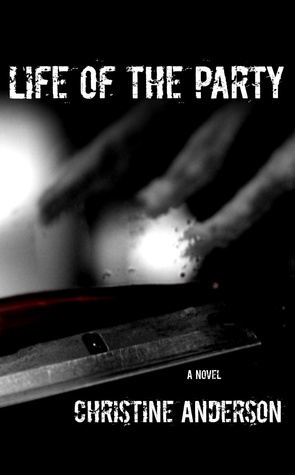Christine can hardly wait to be rid of her well-intentioned yet misunderstanding parents, her perfect older sister, Marcy, and her officious brother-in-law, Greg. Already a marijuana user and a consistent experimenter with other drugs, Mac knows that graduation from high school will open to her a whole new world of limitless and irresponsible fun. Her best friend and partner in crime, Riley, is also a user and hard-partier, until he has a bad mushroom-induced experience and “sees Hell,” and subsequently turns his entire life around. Unwilling to change, Mac chooses a different path that takes her down a dark road to serious hard drug addiction, as well as an unhealthy relationship with an older man.
Though “Life of the Party” is essentially a young-adult work of fiction, it grapples with very mature themes that might seem too dark for the younger reader. Over the course of Mac’s spiraling decline, Anderson very clearly illustrates both the physical and mental effects of an array of drugs. For instance, when Mac experiments with heroin for the first time, she goes into great detail about how, “Wave after wave of warmth was crashing over me – blissful heat, the perfect temperature, pouring all over my body – loosening my muscles until they felt weak and heavy, beyond the point of relaxed.” This, if taken out of context, could be misconstrued as advocating the use of heroin. Anderson makes sure, however, that by the end of Mac’s journey, the reader is completely familiar with the debilitating physical and mental effects of drug use.
Another theme of this story that might be too mature for some young adult readers is that of physical romance in a serious relationship. While Anderson usually stays within the borders of discretion, in one scene she goes into detail that might be off-putting or even uncomfortable for some readers.
Anderson balances these adult issues with themes that might resonate better with the young adult reader. Mac and Riley’s relationship shows the difficulties that many teens experience in making the transition from friends as children to friends as adults. Since Mac’s parents are away at work most of the day, Mac sees little of them and learns to survive on her own–a familiar situation for many teens. And finally, the classic bone of contention about having an older, more popular and more successful sibling may also increase this story’s appeal to a young audience.
Overall, “Life of the Party” is a mature and thought-provoking work that manages to deal with adult themes as well as those of teenagers, resulting in a tough but gratifying read. As both a cautionary tale and a story of redemption, older teens and adults will appreciate the impact of this novel.
Reviewed by Claire Colburn for IndieReader

